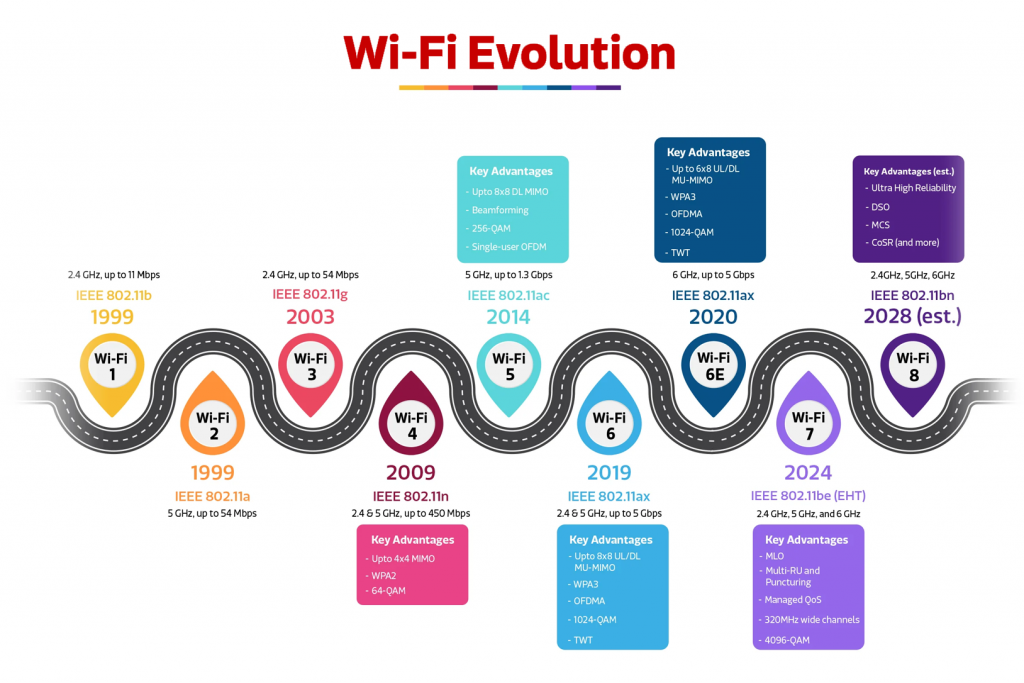




Wi-Fi 7 (IEEE 802.11be) is poised to become a game changer. It brings improvements in speed, latency, reliability, and capacity — all critical for modern digital applications. Here’s a clear look at what’s new, why it matters, and what ISPs and network managers should be doing to stay ahead.

Wi-Fi 7 isn’t just an incremental upgrade — it’s a leap toward connectivity that meets the demands of tomorrow.
Jaze Networks helps businesses and service providers manage users on Wi-Fi networks and deliver seamless Wi-Fi experiences to end-users.
Jaze Access Manager provides solutions in integration with all lead wireless equipment manufacturers to deliver customized on-boarding workflows, granular policies for Wi-Fi Access through AAA and logging for compliance.
Click here to know more on Jaze Access Manager.
In the world of networking and digital communication, data transmission plays a crucial role in ensuring seamless connectivity. Among the various transmission methods, unicast and multicast are two widely used techniques, each serving different purposes and offering unique benefits. Understanding these methods is essential for optimizing network performance and ensuring efficient data delivery.
Unicast is a one-to-one communication model where data is sent from a single sender to a single receiver. This approach ensures personalized and secure data delivery, making it ideal for scenarios requiring individualized content.
Examples of Unicast Applications:
How Unicast Works: In unicast transmission, data packets are directed to a specific IP address corresponding to the receiver. The server establishes a separate connection for each user, which, while ensuring personalized content delivery, can lead to increased bandwidth consumption as the number of users grows. This scalability challenge arises because each additional user requires a distinct data stream, potentially leading to network congestion.
Multicast operates on a one-to-many model, transmitting data from a single sender to multiple specified receivers simultaneously. This method is bandwidth-efficient when delivering identical content to numerous users.
Examples of Multicast Applications:
How Multicast Works: In multicast transmission, data packets are sent to a multicast group address. Network devices like routers and switches manage the distribution, ensuring that only users who have joined the multicast group receive the data. This approach conserves bandwidth by transmitting a single stream that multiple users can access, reducing the server load compared to unicast.
| Parameter | Unicast | Multicast |
| Transmission | One-to-one | One-to-many |
| Server Load | High (individual connections per user) | Low (single stream for multiple users) |
| Bandwidth Usage | Increases with each additional user | Efficient, remains constant regardless of user count |
| Scalability | Limited by server and bandwidth capacity | Highly scalable for large audiences |
Personalization | High (customized content per user) | Low (same content for all users) |
The decision to use unicast or multicast hinges on specific requirements:
ISPs deliver IPTV services to their subscribers using unicast or multicast technology. When there is a high number of channels available to subscribers, unicast is preferred to reduce bandwidth requirement. However, this requires a number of CDN servers to cache and deliver traffic. When the number of channels is limited, multicast is a preferred method to deliver content in a low cost manner.
ISPs need to deploy IPTV as a value-added service to retain subscribers and ensure customer satisfaction. ISPs also need software to bill for broadband and IPTV services in a single consolidated invoice.
Jaze ISP Manager integrates with leading IPTV vendors to enable seamless service activation and renewals for multiple services through triple play billing and providing subscribers with a seamless experience. Click here to learn more